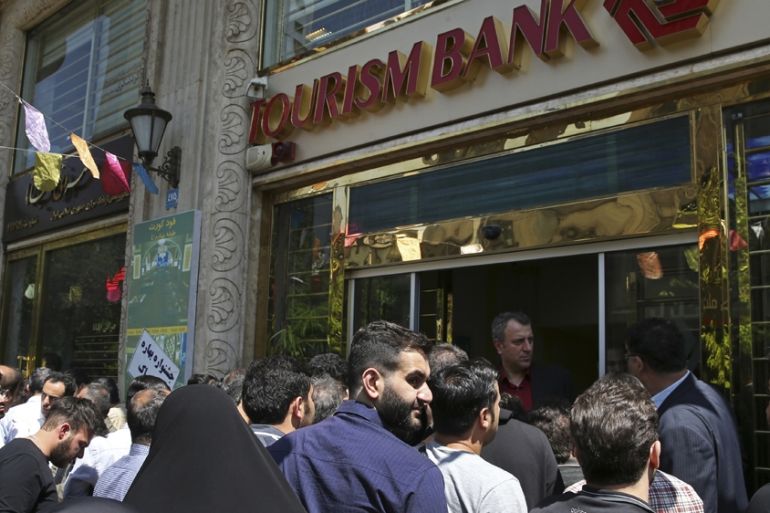Iran’s currency plunges to record low as US sanctions loom
Rial has lost half its value since April amid weak economy and big demand for dollars by Iranians fearful of sanctions.

Iran’s currency has plunged to another record low, dropping past 100,000 rials to the US dollar, as Iranians brace for August 7 when the United States is due to reimpose the first batch of sanctions on their economy.
In May, Washington pulled out of a landmark 2015 deal between world powers and Tehran under which international sanctions on Iran were lifted in return for curbs on its nuclear programme.
Keep reading
list of 4 items‘Why should we vote?’ India’s jute workers blame politicians for woes
California farmworkers cheer new housing in town scarred by mass shooting
Russia’s Putin eyes greater support from China for Ukraine war effort
The US government decided to reimpose sanctions on Iran upon its withdrawal, accusing it of posing a security threat, and has told countries they must halt all imports of Iranian oil from November 4 or face US financial measures.
On Sunday, the Iranian rial plunged to 111,500 against one US dollar on the unofficial market, down from about 97,500 rials on Saturday, according to foreign exchange website Bonbast.com.
Other websites said the dollar was exchanged between 108,500 and 116,000 rials.
The rial has lost about half of its value since April because of a weak economy, financial difficulties at local banks and heavy demand for dollars among Iranians who fear the effects of sanctions.
Iran’s government tried to fix the rate at 42,000 in April, and threaten to crack down on black market traders. But the trade continued amid public worries about a prolonged economic downturn.
Tehran was forced to soften its decision in June, allowing more flexibility for certain groups of importers, according to local reports.
![Foreign Exchange Rate according to the Central Bank of the Islamic Republic of Iran [Screenshot from the CBIR]](/wp-content/uploads/2018/07/4eec9226bffc4c0bac8de0695b7efb37_18.jpeg)
On August 7, Washington is expected to reimpose sanctions on the purchase or acquisition of US dollars by the Iranian government, Iran’s trade in gold and precious metals, and on the direct and indirect sale, supply and transfer to or from Iran of graphite, raw or semi-finished metals, coal and industrial-related software.
Sanctions will also be reapplied to the importation into the US of carpets and foodstuffs made in Iran, and on certain related financial transactions.
Iran, on the other hand, plans to offer price and tax incentives to private investors to take over idle state projects and help boost the economy.
The plan will offer attractive prices and flexible terms as well as tax holidays for investors who agree to take over some of the 76,000 government projects which are unfinished or idle, Vice-President Eshaq Jahangiri said on state television on Saturday.
“Over the past few months, the country’s liquidity has gone into housing, foreign exchange and gold coins, raising prices and provoking public concerns,” Jahangiri was quoted as saying by the website of the state broadcaster.
On November 4, 2018, a second set of sanctions is expected to start on industries such as shipping, oil, petrochemicals and the energy sector. The US will pursue efforts to reduce Iran’s sale of crude oil.
Iran’s oil exports could fall by as much as two-thirds, putting oil markets under huge strain amid supply shortages elsewhere in the world.